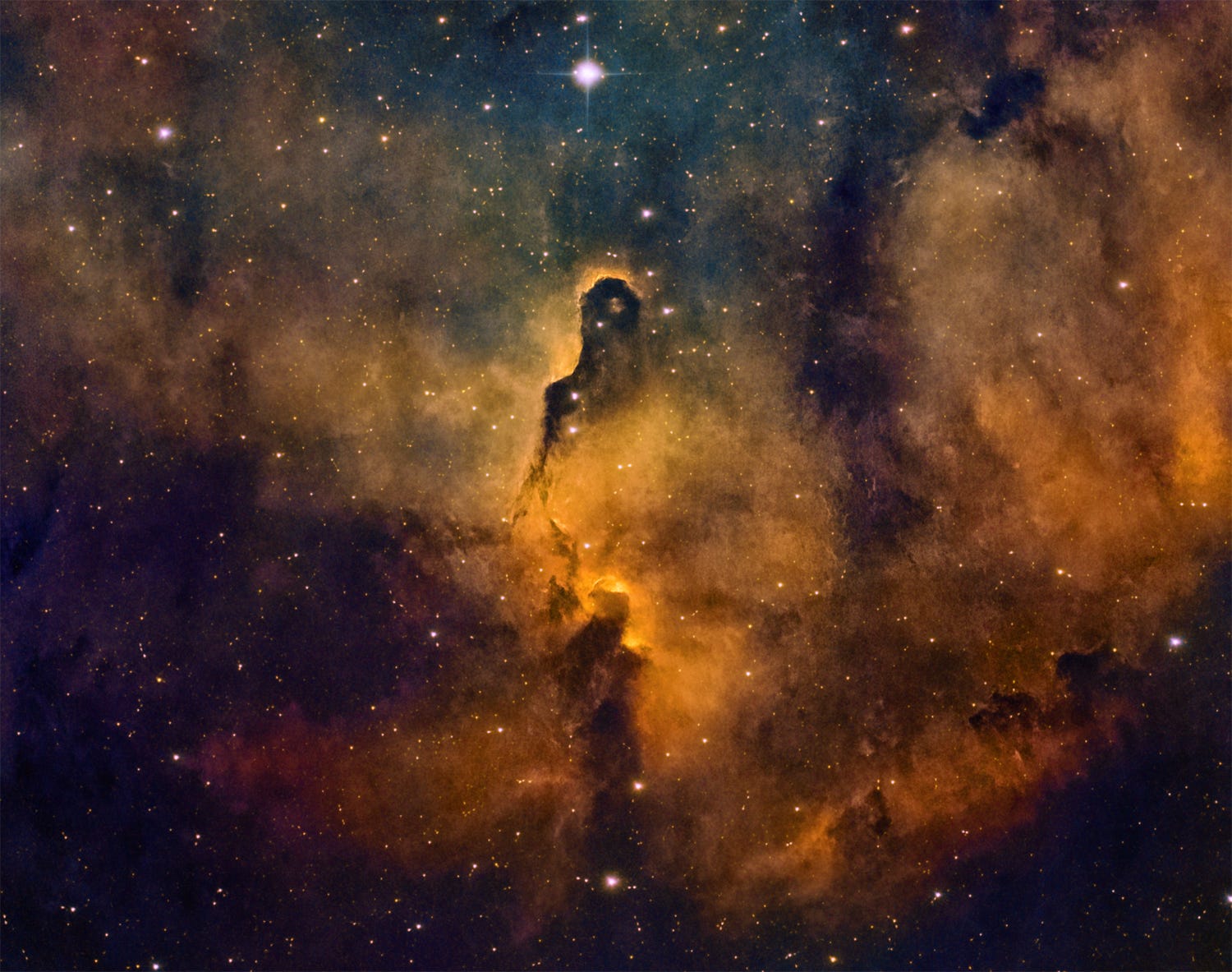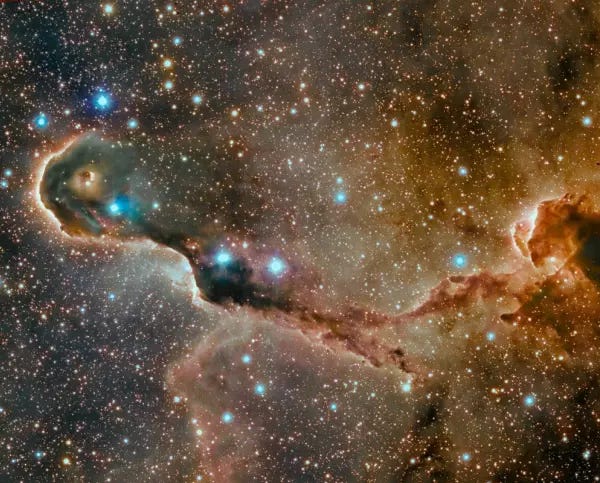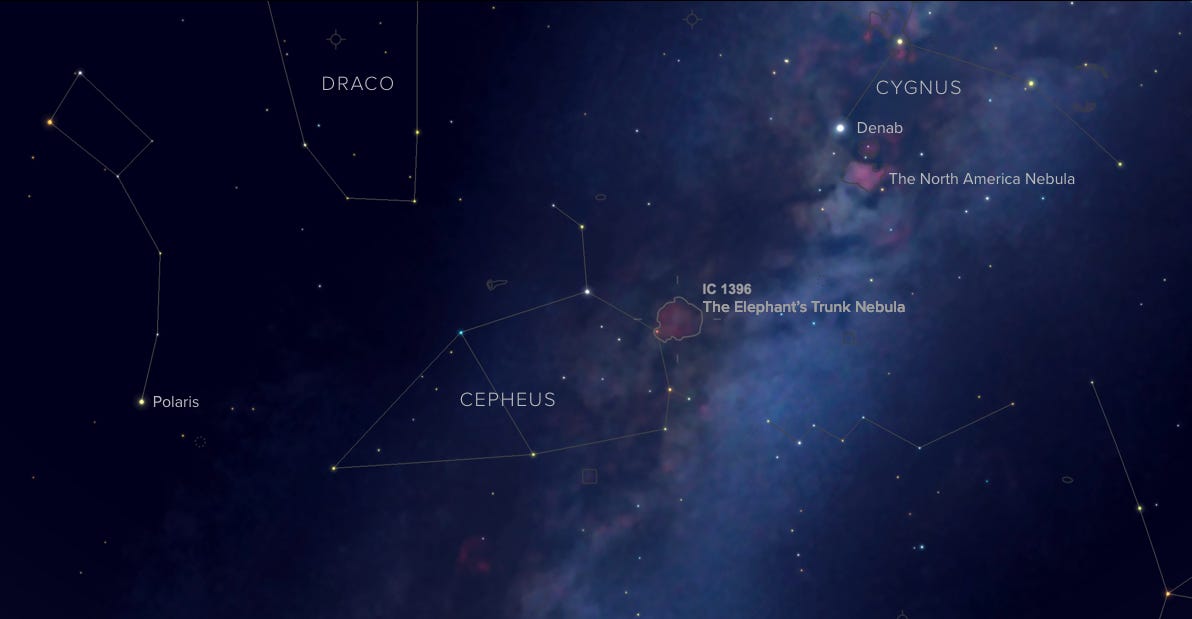The Elephant's Trunk Nebula: Forging Stars in a Cosmic Storm
A Deep Dive into IC 1396A, with D3 Post Processing Tips & Tricks and a New DATA CLUB Data Drop
DwarfVision Aug 14, 2025
Dwarf CREW - Scroll down to access the data!
Let's venture into the celestial kingdom of Cepheus to capture one of the most iconic and dynamic star-forming regions in our night sky: The Elephant's Trunk Nebula (IC 1396A). This isn't just a wispy cloud; it's a site of cosmic violence and creation, a pillar of gas and dust actively being sculpted by a colossal star. The reward for capturing it is witnessing star birth in real time.
There's a profound sense of scale when you frame this target. You're capturing a structure over 20 light-years long from a distance of 2,400 light-years. My mission with this multi-night capture was to prove the DWARF 3 could resolve the fine, bright rim of the nebula—the shock front where energy meets matter—and hint at the darkness of the dense pillar where new stars are hidden.

The Science Deep Dive: A Violent Stellar Nursery
The Elephant's Trunk Nebula is a small part of a much larger emission nebula, IC 1396, which is being energized by the brilliant, massive binary star system HD 206267 (The bright star seen almost at the centre of the nebula). This behemoth star unleashes savage stellar winds and intense ultraviolet radiation, carving out the cavity you see.
The "trunk" itself is a dense pillar of cool molecular hydrogen and dark dust that is resisting this erosion. The bright, winding edge is the surface of this pillar, being lit up (ionized) by the stars. This process isn't just destructive; it's creative. The immense pressure from the radiation is compressing the gas and dust within the pillar, triggering gravitational collapse and giving birth to a new generation of protostars—cosmic infants less than 100,000 years old. When you image this target, you are capturing a live-action battle between stellar destruction and creation.

Tips & Tricks:
From Data to Dazzling - My Post Processing Workflow
Winning the battle against the faintness of this target is all in the processing. The initial stack from a multi-night session of over 500 light frames can look underwhelming. The key is separating the different components of the image to control them individually.
Learn more about SIRIL stacking - Get our detailed beginners guide here!
1. SIRIL Stacking: In SIRIL, my first goal was to perform a gentle background extraction and a light, careful stretch. The goal here isn't to create the final image, but to reveal just enough data to work with in Photoshop and Lightroom without clipping the blacks or blowing out the brighter areas of the nebula's rim.
2. The Power of Separation in Photoshop: This is where the magic happens. Using RC Astro’s StarXterminator, I created a master image: with only the nebula. This separation is the single most important step for this target. It allowed me to:
Aggressively stretch the nebula in Lightroom: with such great 16bit data from Siril I could push the contrast and saturation on the starless nebula layer to bring out the faint details of the dark dust lanes and the glow of the bright rim without creating bloated, ugly stars.
Control the stars: I could then process the star layer (the original result from SIRIL with BlurX applied) separately in Lightroom, cranking the contrast and darkening until the nebula is invisible yet keeping the stars small, sharp, and natural-looking before layering them back in Photoshop as a “screen” layer at the end.
Add additional noise reduction and sharpening: With RcAstro’s BlurX combined with Topaz’s DeNoiseAI for sharpening on the starless layer, I first remove the leftover noise from the D3’s chip and then gently sharpen the details, being careful to not overdo it.
Mission Accomplished!
The final image reveals the delicate, bright rim standing in stark contrast to the dark, cavernous pillar, proving that even from our backyards, we can capture the epic story of stellar birth unfolding 2,400 light-years away.
Ready to Try This Yourself? Join the DATA CLUB!
I hope these tips inspire you to tackle this amazing target!
If you want to skip the data acquisition and jump right into processing, the best way to learn is by working with our high-quality data. By becoming a paying subscriber, you'll join the DwarfVision DATA CLUB and get immediate access to all the files from this project, including the raw stacks and my full Photoshop project file.
You'll find the download links right below the paywall.
Finding the Trunk: A Celestial Treasure Hunt
Located in the constellation Cepheus, the Elephant's Trunk Nebula is a prime target for astrophotographers during the late summer and autumn months in the Northern Hemisphere. To find it, first locate the distinct "house" shape of Cepheus. The nebula lies within the large, faint circle of the IC 1396 complex, which is famously anchored by one of the reddest stars in the sky, Mu Cephei, also known as "The Garnet Star." While the entire complex is large, the "trunk" itself is a small, subtle feature requiring dark skies and long exposures to capture well, making it a rewarding challenge for the DWARF

Keep reading with a 7-day free trial
Subscribe to DwarfVision to keep reading this post and get 7 days of free access to the full post archives.







